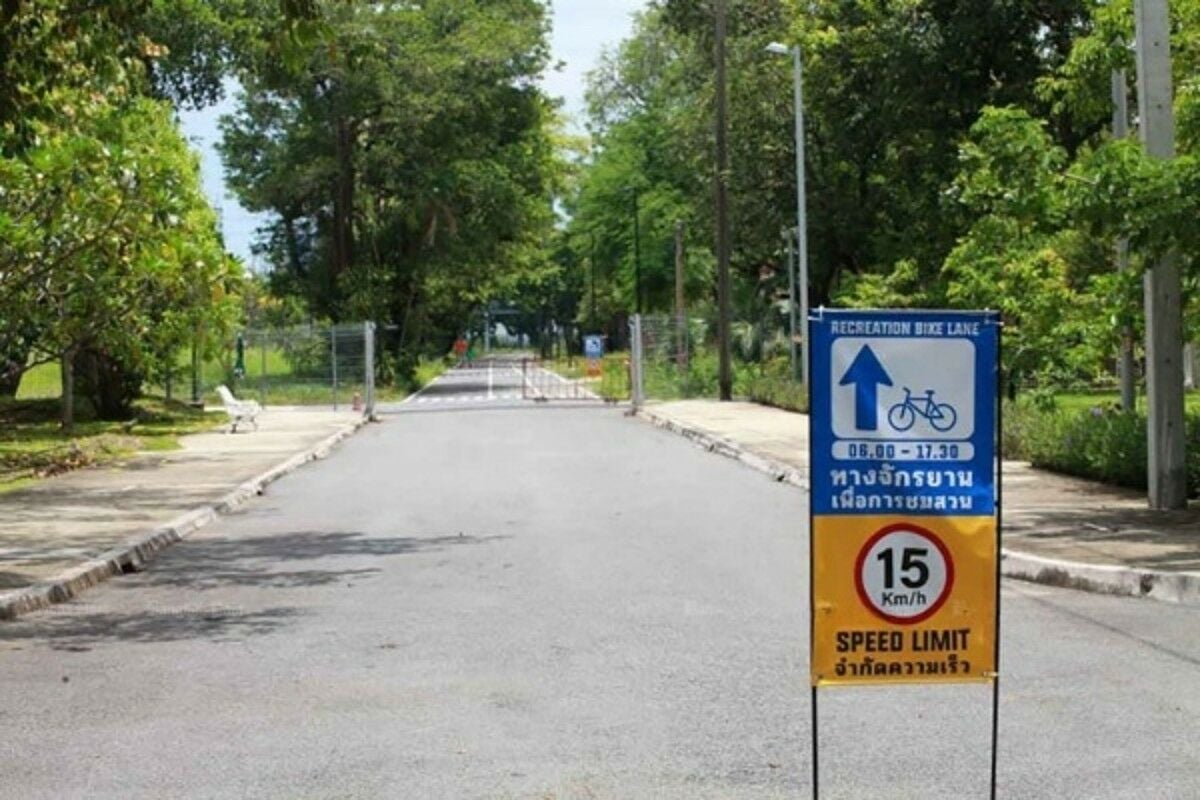Bangkok plans cycling lanes to ease congestion in key districts

The capital’s bustling streets may soon see a transformation as the Bangkok Metropolitan Administration (BMA) and the Thailand Walking and Cycling Institute Foundation (TWCIF) are set to introduce a walking and cycling lane project in four heavily congested areas. A feasibility study for this initiative is scheduled to conclude next month, setting the stage for a city-wide shift in transportation infrastructure.
Silpa Wairatpanij, a board member of TWCIF, highlighted the project’s ambition to serve as a 2024-2032 master plan, aiming to establish Bangkok as a pedestrian and bicycle-friendly city with seamless connections to public transportation. This collaborative effort between the foundation and the BMA’s Traffic and Transportation Department seeks to identify more efficient routes for walking and cycling, improving upon previous studies that fell short of providing practical solutions.
The pilot project will focus on four high-traffic zones: Lat Phrao 71, Phrom Phong, Sam Yot, and Tha Phra. These areas have been strategically chosen due to their links with Bangkok’s electric rail systems. Silpa explained that in the Lat Phrao 71 area, walk-bike lanes will be initiated on roads such as Lat Phrao, Sangkhom Songkhroh, Nak Niwat, and Chok Chai 4, which are connected to the MRT Yellow Line.
Phrom Phong, located along Sukhumvit Road, was selected due to its unique blend of residential and commercial spaces. It benefits from connections to the MRT and BTS rail systems, as well as the Saen Saep Canal express boats, linking it to key business districts like Siam, Silom, and Rama IX. For the Sam Yot area, walk-bike lanes will cover a 2-kilometre radius from the Sam Yot MRT station, connecting local communities with the Blue Line stations, including Sanam Chai, Wat Mangkorn, and Hua Lamphong, along with Chao Phraya and Saen Saep Piers.
In the Tha Phra area on the Thonburi side of the city, special lanes will enhance connectivity for 68 local communities, facilitating access to MRT and train stations such as Bang Phai, Wong Wian Yai, Itsaraphap, and Talat Phlu. These pilot lanes are designed with a universal approach, incorporating shade, green spaces, and sufficient lighting to ensure safety and convenience for cyclists and pedestrians.
Silpa noted that previous walking and cycling paths did not reach their potential because they targeted leisure cyclists and athletes rather than daily commuters. This new project aims to address those shortcomings by prioritising the needs of everyday users.
“These lanes will provide safe and convenient spaces for bicyclists and pedestrians, helping reduce traffic congestion and promote healthier lifestyles.”
However, some residents, like Sakunrat Thongtongkum, an office worker in Silom, remain sceptical. She pointed out that the heat makes walking uncomfortable, and cycling poses risks due to traffic. Sakunrat urged officials to first improve the city’s public transport system, which she described as inconvenient due to inadequate connections. She also called on the government to lower transport fares and enhance road safety.
“The public transportation system needs better connectivity, and commuters would benefit from reduced fares and improved road safety measures.”
The proposed walking and cycling lanes represent a significant step towards a more sustainable urban environment in Bangkok. As the feasibility study wraps up, the city awaits the next phase of development, which promises to reshape how residents navigate its busy streets, reported Bangkok Post.
What Other Media Are Saying
- GeoNoise observes Bangkok’s traffic management as more polite and disciplined compared to Metro Manila, highlighting better lane discipline and law observance, yet acknowledges it still has room for improvement. (read more)
Frequently Asked Questions
Here are some common questions asked about this news.
Why might Bangkok’s new walk-bike lanes transform urban mobility?
They aim to enhance connectivity, reduce congestion, and promote healthier lifestyles by integrating with public transport systems.
How could Bangkok’s weather impact the success of cycling initiatives?
The heat may deter commuters; thus, infrastructure must include shaded paths and cooling solutions.
What if Bangkok’s cycling lanes fail to attract daily commuters?
The city might reassess priorities, focusing more on improving public transport connectivity and addressing residents’ concerns.
How can Bangkok balance cycling infrastructure with public transport improvements?
By creating integrated systems that offer seamless transitions between walking, cycling, and transit options.
Why is community feedback crucial for Bangkok’s transportation projects?
It ensures the initiatives address real commuter needs, leading to more practical and widely accepted solutions.
Latest Thailand News
Follow The Thaiger on Google News:


























